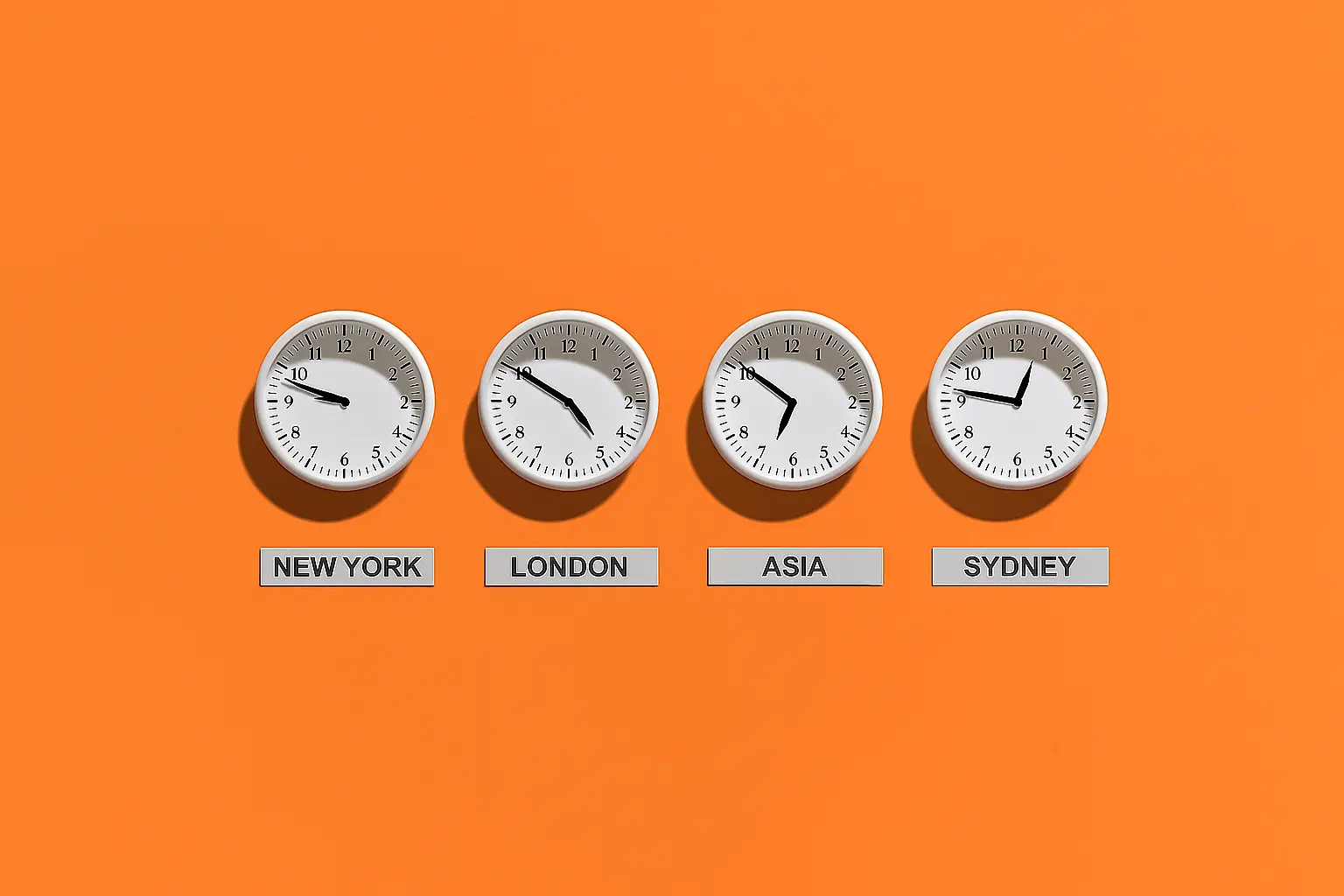6 Chart Patterns for Day Trading You Should Know About
Written by Hunter on December 12, 2023.Being a successful day trader means knowing how to find opportunities. You need to know how to spot trading patterns so you can time your “buy” and “sell”. How do you find these patterns?
Through charts. Once you know how to read a stock chart, you’re that much closer to being a successful day trader. But where do you start?
Well, we know chart patterns can be overwhelming for new or inexperienced traders. So, to help, let us explain what key chart patterns trading enthusiasts should know about.
What Is a Chart Pattern?
Day trading chart patterns reveal price movements over a set period. The patterns form different shapes, depending on what’s happening with an asset.
- Charts reveal trends. They help day traders identify if prices are likely to rise or fall.
- There are many types of charts in trading. They each reveal different details.
- The level of detail you need depends on where you’re trading.
Chart Pattern Basics
How do chart patterns work? Let’s cover some basics.
Charts use trendlines to show price changes. The shape of the trendline determine whether prices are rising or falling. We find patterns within the trendlines by looking at specific price points along the way.
Day Trading and Chart Patterns
As a day trader, you’ll study charts frequently. So, to help, let’s break down the most basic line trends: uptrends and downtrends.
- Uptrends: An uptrend means higher lows – and higher “highs”.
- Downtrends: Downtrends mean lower “highs” and lower lows.
And at their simplest, the most basic patterns are continuations and reversals.
- Continuation: A continuation means there’s a brief pause, but then prices continue on the same trend as before.
- Reversal: Reversal patterns appear when the trend changes and prices head in a new direction.
Let’s now look at a few common continuation and reversal patterns.
1. Wedges
Wedges are formed by two trendlines converging. Both lines are moving in the same direction so you can draw a wedge or triangle shape.
- Down or falling wedges signal a pause. They often precede a shift from a downtrend to an uptrend.
- Up or rising angles suggest an interruption. They may be followed by a reversal.
2. Flags
We see flag patterns when there are two parallel trendlines. They can move up, down, or horizontally. They often signal a breakout after a consolidation period.
An upslope could mean there’s a pause which may reverse a downtrend. And a downslope may mean there’s a change coming in an upward trend. Horizonal (pennant) flags typially mean we’re seeing a continuation of a current trend.
3. Triangles
Triangles are complicated. In simple terms, though, they’re heavily influenced by supply and demand.
Often, triangles occur when supply shrinks due to lessening demand. The shortening supply, and lessening demand, eventually converge to form this triangle pattern. They can also indicate a breakout to come in the future – patience may be required here.
4. Doubles
A “double” is mostly – if not always – associated with a reversal. It occurs when a price either climbs or drops twice, meets resistance, and shifts towards a new trending pattern.
- Double Top: The price peaks twice before it can’t push further. It’ll then reverse downwards and start a new pattern.
- Double Bottom: The price drops twice before it starts moving upwards again.
Learning how to spot such patterns can help day traders make careful, calculated moves for maximum profit!
5. Head and Shoulders
This chart pattern appears when you have a large price peak flanked on each side by smaller peaks. So, there are three surges in either an upwards or downwards direction. Eventually, though, the price either rises – or falls – back to the a support level, or “neckline”.
Typically, this pattern signifies a reversal on either an upward or downward trend.
6. Sushi Roll
A “sushi roll” appears when you have a certain pattern of inner and outer bars. The “inner” layer contains bars with a range of narrow price points. The “outer” layer wraps around these bars, surrounding them with a lower low and higher high.
- If you’re watching a downtrend, sushi rolls could mean it’s time to buy.
- For uptrends, sushi rolls may mean it’s a good time to sell.
Sushi rolls often have at least 10 bars but there could be more or less.
How Do I Practice Learning to Read Chart Patterns?
The only way to get good at reading chart patterns is to study a lot of them. Practice reading and interpreting trends before you invest any money. And don’t trade with any money you can’t afford to lose – especially as a beginner!

A Maven Trading demo account is an excellent option for learning to read chart patterns. You can learn how to study and interpret trends using simulated capital. You can monitor your progress, get feedback, and ask for support. And we cover the losses – that’s one of the perks of trading with a prop firm!
Can I Rely On Chart Patterns?
While they’re useful, charts shouldn’t be the only tool in your trading toolbox. You might also want to:
- Check the news
- Join online communities e.g. on Discord
- Listen to podcasts on trading
- Learn from experts
Chart patterns are integral to day trading, but don’t rely on them exclusively.
Which Chart Pattern Do Traders Use the Most?
It depends on your preferences. However, many day traders find simple candlestick charts useful. This is because the “candles” depict four specific price points: high, low, open, and close.
In other words, traders can check, for example, if the “close” price is higher than the day’s opening price. And they can accurately track trends on open and closing prices across a set period.
However, just because some traders prefer candlestick charts doesn’t mean this is all you should use! Learning how to read a variety of chart patterns will yield the most information – and the best results. Be sure to backtest your strategy before you are confident going into the financial markets with personal funds.
Get Funded With Maven Trading
Learning how to read chart patterns moves you that much closer to making successful trades. But if you’re ready to take the next step and trade with a prop firm, we’re here for you!
At Maven Trading, we help talented day traders develop their skills. We provide the simulated capital, you make the trades. If you’re successful, you get a percentage of the virtual profits.
It’s that simple!
To get started, open an instant funding account or apply to complete one of our challenges. If you have the skills we’re looking for, we’ll let you know the next steps. Make your choice today!



